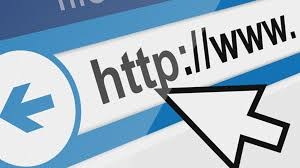please click here:
Introduction
For businesses engaging in international trade, the phrase “US customs clearance” often carries a mix of opportunity and anxiety. The process can feel overwhelming due to complex regulations, documentation requirements, and compliance standards. Yet, customs clearance is the essential gateway for goods entering or leaving the United States. This guide explores every aspect of US customs clearance in detail, helping importers, exporters, and logistics managers navigate the process with confidence.
What is US Customs Clearance?
US customs clearance is the official process through which imported or exported goods are reviewed and approved by US Customs and Border Protection (CBP). It ensures that shipments comply with all relevant laws, pay the correct duties and taxes, and meet health, safety, or security standards before entering or exiting the country.
The process involves more than simply declaring goods. It is a multi-step procedure that includes document submission, duty payment, risk assessment, inspections, and sometimes additional regulatory approvals from other US agencies such as the FDA, USDA, or EPA.
Why Customs Clearance Matters
Customs clearance plays a critical role in international trade. It is not just a bureaucratic formality but a safeguard for national security, consumer safety, and fair trade. Businesses that master the customs clearance process can:
-
Avoid costly delays at ports of entry.
-
Prevent fines and penalties due to non-compliance.
-
Build stronger relationships with logistics providers and customs brokers.
-
Maintain efficient supply chain operations and customer satisfaction.
The US Customs Clearance Process in Detail
Documentation Requirements
Proper documentation is the foundation of smooth clearance. Some of the most common documents include:
-
Commercial Invoice: Outlines the value and description of goods.
-
Bill of Lading or Air Waybill: Provides shipment details.
-
Packing List: Helps customs officers verify the cargo.
-
Customs Bond: A financial guarantee for duties, taxes, or penalties.
-
Importer Security Filing (for ocean shipments): Must be submitted before cargo departs the port of origin.
Payment of Duties and Taxes
Import duties, tariffs, and taxes must be calculated and paid before goods can be released. Rates vary based on product classification under the Harmonized Tariff Schedule (HTS). Some goods may qualify for reduced or zero tariffs under free trade agreements.
Customs Inspection
Not all shipments are physically inspected, but CBP uses risk-based assessment to decide which cargo to examine. Inspections can include x-ray scanning, sampling, or detailed manual checks. Delays may occur if goods require lab analysis or regulatory clearance.
Common Challenges in US Customs Clearance
Delays at Ports
One of the most common challenges is unexpected delays due to incomplete documentation or incorrect filing.
High Duties or Unexpected Costs
Failure to classify products correctly under the HTS code can lead to higher-than-expected duties.
Restricted and Prohibited Items
Certain goods, such as counterfeit products, endangered species items, or specific agricultural goods, are restricted or prohibited. Misunderstanding these rules can result in confiscation.
Multiple Agency Requirements
Beyond CBP, various federal agencies may impose regulations. For example:
-
The FDA regulates food, drugs, and cosmetics.
-
The USDA regulates agricultural products.
-
The EPA regulates chemicals and environmental goods.
Comparing Import and Export Customs Clearance
| Aspect | Import Clearance | Export Clearance |
|---|---|---|
| Main Authority | US Customs and Border Protection (CBP) | CBP, plus export compliance agencies |
| Documentation Focus | Invoice, HTS classification, duty payments | Export declaration, export license (if needed) |
| Duty/Tax Responsibility | Importer pays duties and taxes | Exporter may need license fees or filing costs |
| Risk of Inspection | Higher, especially with sensitive goods | Lower, but checked for compliance with laws |
| Related Agencies | FDA, USDA, EPA, CPSC | BIS, State Department, Census Bureau |
The Role of Customs Brokers
Customs brokers act as intermediaries between importers/exporters and CBP. They handle documentation, duty calculation, and compliance checks on behalf of businesses. Using a licensed broker reduces risks of errors and accelerates clearance.
Benefits of using a customs broker include:
-
Expert knowledge of regulations.
-
Ability to handle electronic filing.
-
Real-time updates on clearance status.
-
Reduced chances of costly penalties.
Technology in US Customs Clearance
Digital transformation is reshaping the customs process. Automated Commercial Environment (ACE), an online platform managed by CBP, centralizes documentation submission and clearance tracking. AI and blockchain are also being tested to improve transparency, reduce fraud, and speed up global trade operations.
Best Practices for Successful US Customs Clearance
-
Start with accurate product classification. Use the correct HTS codes to avoid overpaying duties.
-
Prepare complete documentation in advance. Missing paperwork is the leading cause of delays.
-
Work with licensed customs brokers. Their expertise saves time and money.
-
Stay updated with trade policies. Tariffs, sanctions, and agreements change regularly.
-
Ensure compliance with partner government agencies. If your goods fall under FDA, USDA, or EPA regulations, confirm requirements before shipping.
Future Trends in Customs Clearance
Global trade dynamics are changing rapidly, influenced by technology, geopolitical shifts, and sustainability concerns. The future of US customs clearance may include:
-
More reliance on AI-powered risk assessment tools.
-
Greater integration of blockchain for cargo tracking.
-
Increased emphasis on green trade compliance.
-
Enhanced collaboration between international customs authorities.
Frequently Asked Questions
1. How long does US customs clearance take?
It can take anywhere from a few hours to several days, depending on documentation accuracy, inspection requirements, and cargo type.
2. Do I always need a customs broker?
While it's not legally required, most importers use brokers to avoid compliance errors and delays.
3. What happens if my goods are held at customs?
You may need to provide additional documents, pay outstanding duties, or comply with agency requirements. Working with your broker helps resolve issues quickly.
4. Can I reduce duties on imported goods?
Yes. Using correct HTS codes, applying for free trade agreements, or exploring duty drawback programs can reduce costs.
5. What are restricted imports to the US?
Examples include counterfeit goods, hazardous materials, certain agricultural products, and items that violate intellectual property laws.
Summary
US customs clearance is a vital process for global trade, ensuring goods comply with regulations before entering or leaving the US. This guide explores documentation, duties, inspections, and the role of brokers while offering practical tips and future trends to streamline clearance.






